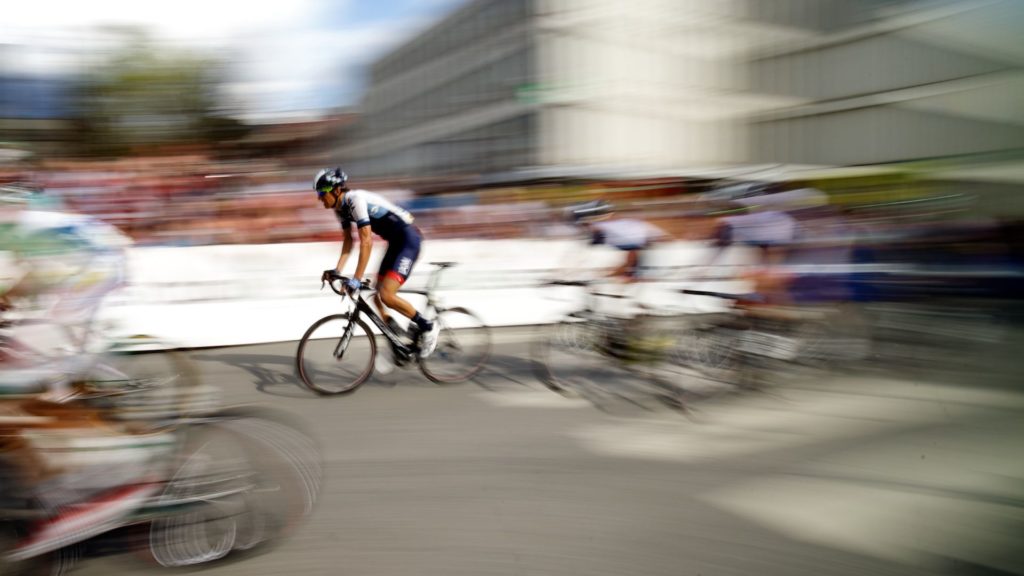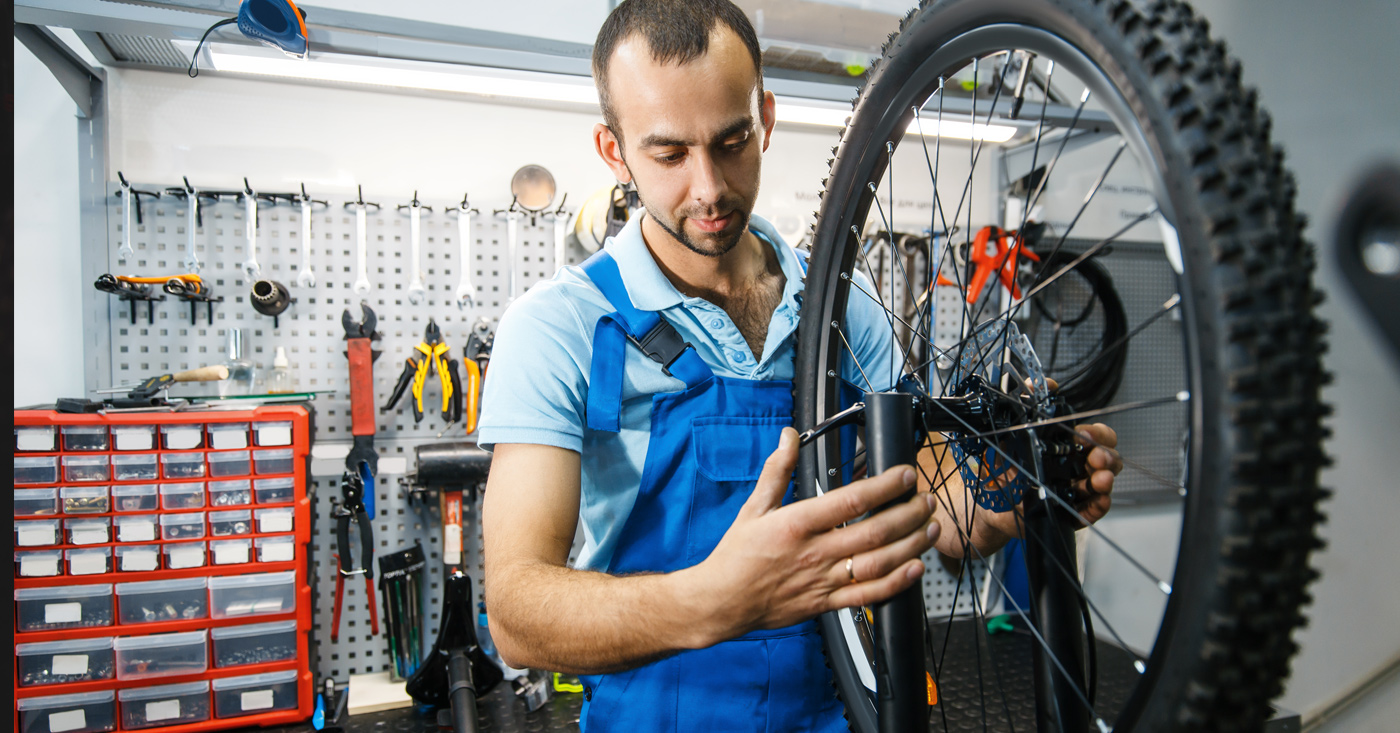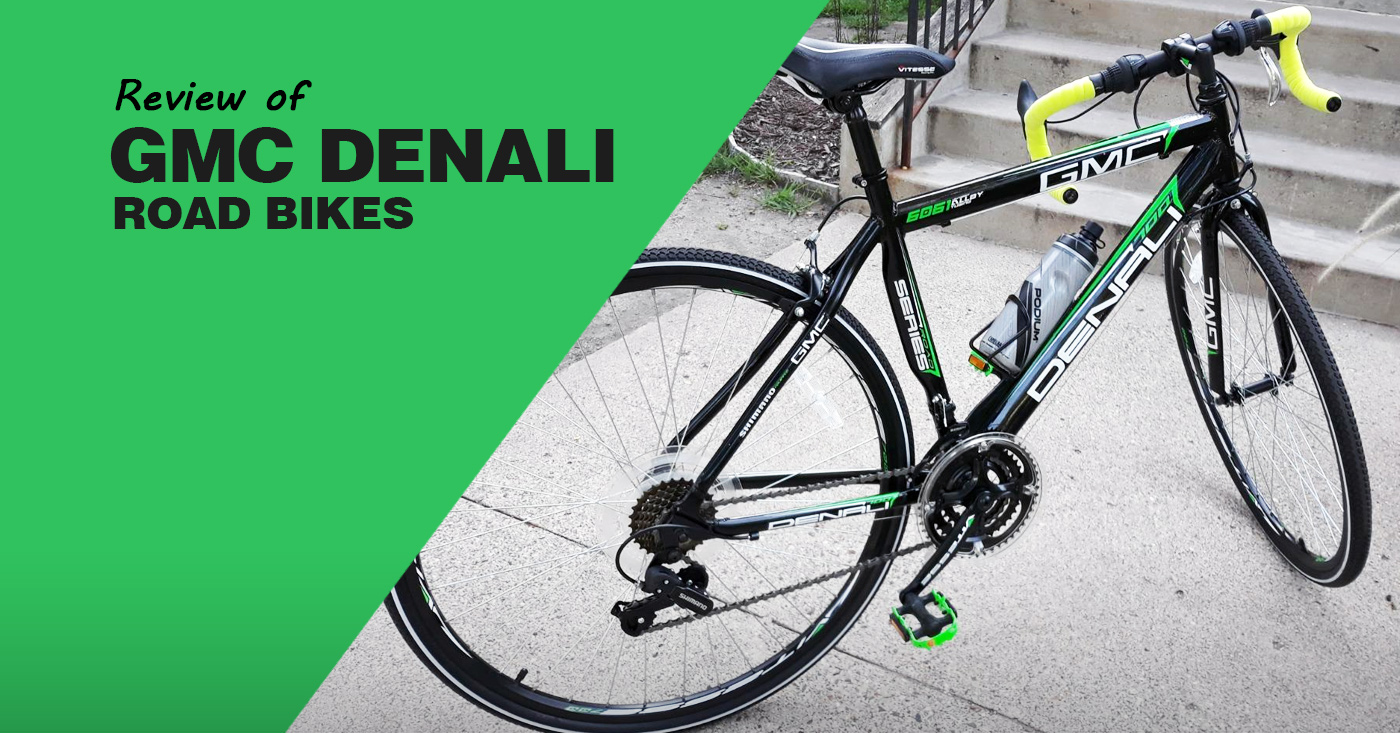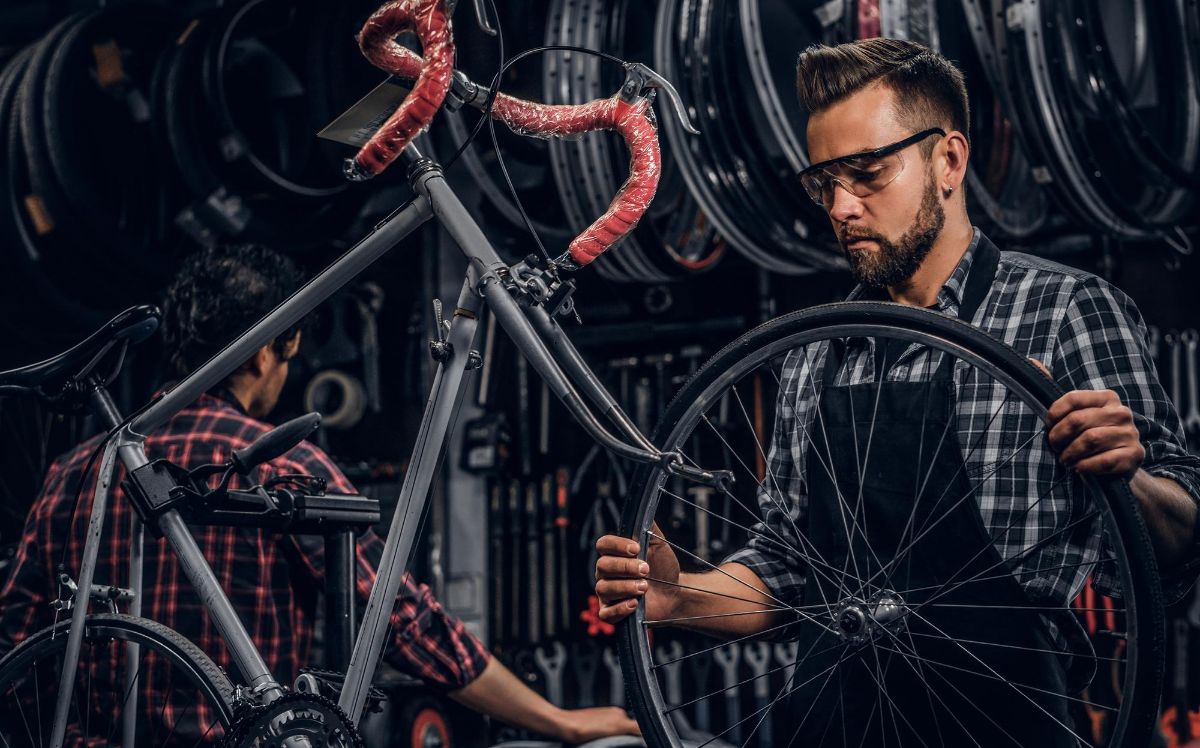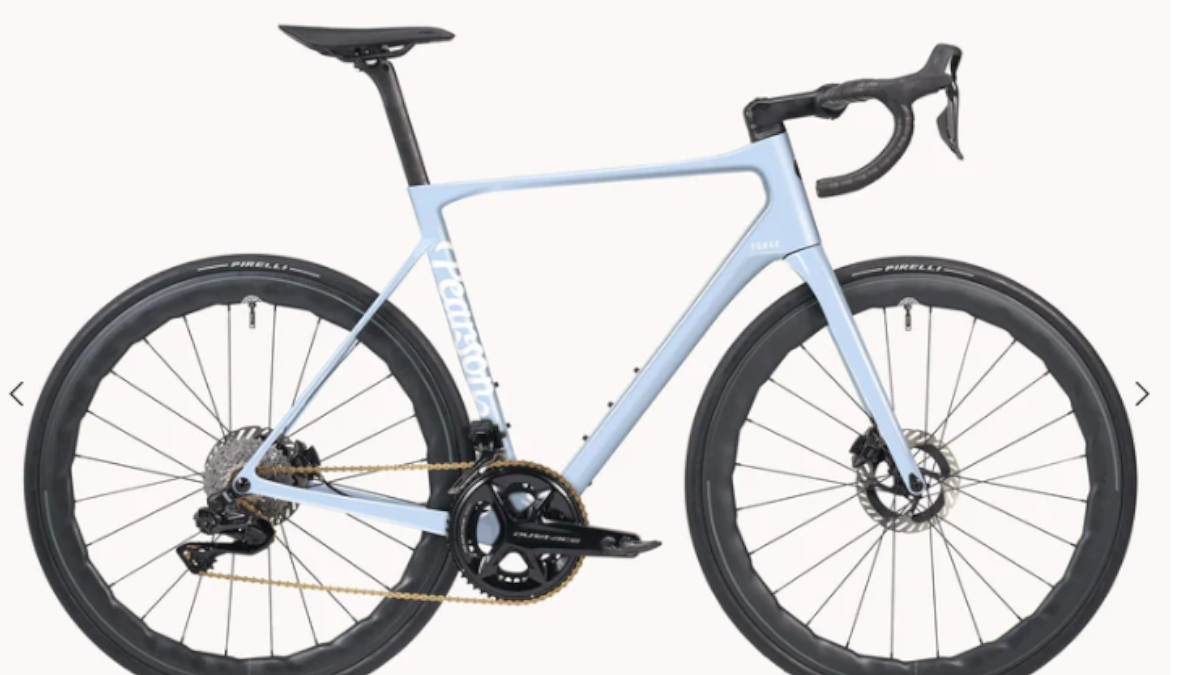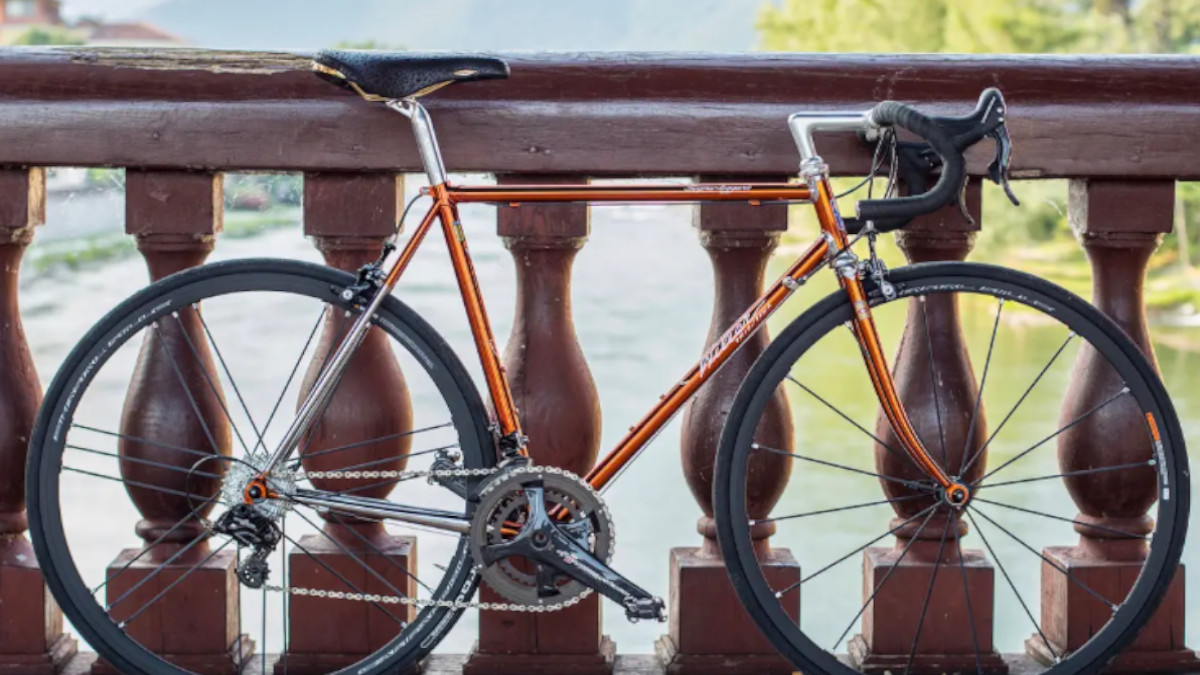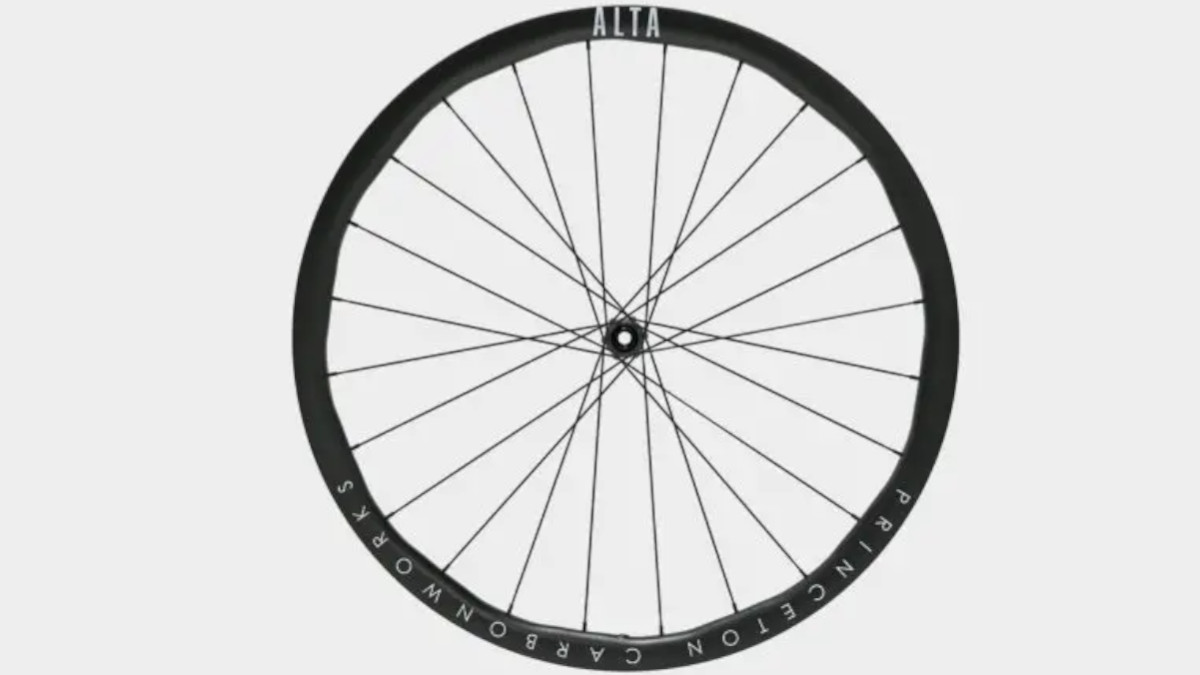It is every biker’s dream, including mine, to enjoy a smooth ride to wherever he/she wants to go, whether heading to work, school, or on a cross-country run. and I have unlocked the secret. A good road bike needs a good, new set of wheels (front and rear) to sail effortlessly on the road.
This complete guide will take you through the process of identifying the right road bike wheels for your bike.
Important Components of a Bike Wheel
Technically, every road bike wheel has its components that you must be aware of so that you can choose the most appropriate, new road bike wheel for your bike.
1. Hub
When you ride your bike, the wheel rotates around the hub which sits at its axis. The axle, which attaches the wheel to the bike, is part of the hub. There is a freehub mechanism on your bike’s rear wheel, except your bike has a fixed wheel, and this feature makes it possible for your bike to coast and can power forward when you step hard on the pedals.
2. Spokes
These are the wires that attach the hubs to the rim. Remember that the number of spokes per wheel and the material they are made from are essential for selecting new, good road bike wheels.
3. Nipples
On your wheels, you can see the spokes thread into a particular nut known as a nipple. You can straighten your wheels by merely adjusting spoke tension through the nipple.
4. Rim
The rim’s main function is to hold the tire and provide a braking surface for bikes with rim brakes.
5. Tire
Tires are the most important parts of road bike wheels as they fit on the rims, protecting them from being destroyed. And there are three main kinds of bike tires you can choose from, based on their usefulness and the durability you desire.
The Different Types of Road Bike Tires
There are basically three kinds of tires for road bikes: clincher (with tubes), tubeless, and tubular. And each tire type requires a specific rim. Explained below are the characteristic features of these tire types:
1. Clinchers
The clinchers are also called the standard tires, and they hold air in separate inner tubes. For road bikes, clinchers are the most common tire type. Sometimes, clinchers are used to denote any kind of tires which are not labeled as either tubeless or tubular.
2. Tubular Tires
Tubular tires are not commonly used as clinchers, and they require a lot of work to get them assembled. They do have tubes as clinchers, but they are rather stitched into a completely enclosed casing which is then glued to the rim.
However, tubular tires are mostly reserved for professional racing because their structures are well-engineered for racing. And for the fact that it is a lot of hassles to repair or set them up, they are a constant headache for road bikers.
3. Tubeless Tires
These kinds of tires are especially good for mountain biking. However, some road bikers are using them on their wheels. A tubeless road tire is mainly an airtight clincher structure with no inner tube. The rims for tubeless tires are also backward when compared with clincher tires.
Which One Do I Prefer?
In my opinion, tubular wheels are the best choice for road cycling. I’ve been using clincher wheels for a long time, but I had to deal with numerous punctures and flat tires. That’s why I switched to tubular, and I haven’t looked back since. The smooth and hassle-free rides are worth the investment.
As a pro cyclist, I’ve learned the importance of reliable equipment. Clincher wheels gave me constant trouble with punctures, which was frustrating and time-consuming. It was affecting my overall cycling experience. That’s when I decided to try tubular wheels, and I was amazed by the difference.
Tubular wheels are designed to be puncture-resistant, providing a worry-free ride. I no longer have to worry about unexpected flats interrupting my cycling adventures. And it’s not just about the puncture resistance, these wheels offer a noticeably smoother ride. This is because the tire is directly attached to the rim, which absorbs road vibrations and bumps. It feels like gliding on a smooth surface, making every ride more enjoyable.
I want to be honest with you. Tubular wheels can be more expensive. But as a pro cyclist, I believe the benefits outweigh the cost. The peace of mind and improved performance they bring are worth the investment. However, I do recommend considering your own riding style and preferences before making a decision.
So, if you’re looking for advice from a fellow cyclist who has had a fair share of the ups and downs of road biking, I highly recommend giving tubular wheels a try. It’s been a game-changer for me, and I believe it can make a difference for you too.
Road Bike Wheels- Some Other Options
As a road biker, you may want to consider other types of wheels if you aim at pursuing some adventures by turning your road bike into a mountain-climbing or racing one.
The kinds of wheels described below have specific features that make it possible for any road biker to do more than just ride on plain or rough roads.
1. Climbing Wheels
If you are interested in climbing, these wheels are the best set for you. Normally, bikers feel rotating weight when they are going uphill, and, in that circumstance, they need wheels with a low weight that feature a low spoke count and a profile rim that is shallow.
Climbing wheels increase ride quality because they are technically super light, weighing between 900g and 1,300g.
2. Training Wheels
Unlike racing or climbing wheels, training wheels must be thick-set or heavy so as to withstand the daily pressure exerted on them. They wear out after some time, and this is why it is imperative to use alloy training wheels, which happen to be the best ones.
You can get a wheelset that weighs between 1,500 and 1, 800g for a moderate price, and the budget ones for a weight of 1,900g or over.
3. Mid-Section Aerodynamic Wheels
The changes in the designs of aerodynamic wheels have created mid-depth wheels, because aerodynamic wheels usually have a deeper section rim, with a rim depth of around 30mm. And these mid-section aerodynamic wheels have great ride quality, low weight, and better performance against the wind.
Even though aerodynamic rims are usually manufactured from carbon fiber in order to keep the weight low, you can get budget options produced from aluminum. The only difference is that they are heavier than the ones made from carbon fiber.
4. Deep-Section Aerodynamic Wheels
If you are racing or aiming for higher speed, you should consider buying deep-section wheels. A deep-section rim of 50mm or more whizzes through the wind without experiencing tangible turbulence or resistance.
But understand that you may encounter some resistance if you are riding in a high crosswind because of the weight of your aerodynamic wheels.
5. Touring Wheels
You need a great touring wheelset if you are interested in adventure, tours, or gravel riding. You want to make sure your wheels are strong enough to withstand the rough riding.
Normally, you will need a wheelset with a high spoke count (28-32). I would also advise you to choose the one that will be serviceable in case of any unexpected problem.
Road Bike Wheels- Technical Information
When you are buying a new road bike wheel, you should pay attention to the following technical specifications because having the appropriate knowledge of them can assist you in choosing the best wheelset for your bike, both for the front and rear.
1. Rim Materials
You may already be aware that wheels are made from two main material types: Aluminum and carbon fiber. Most of the wheels below £800 / $1,200 / AU$1,500 are made from aluminum.
However, carbon road bike wheels are the better choice for the performance of bikes such as racing bikes. For these bikes, toughness and lightness are the two required properties. No doubt, aluminum wheels still retain recognition for braking performance, with the carbon rims catching up on their preferred quality.
2. Wheels’ Diameter
Normally, the standard rim size of a road bike is 700c. It is very rare to see any road bike wheels that are less or more than 700c. Some bikers may not understand what these numbers mean, even though they see them on their road bike wheels every time: 23-622 or 25-622.
They are the international standards for tire sizing: The first number is the tire width (23c, 25c), while the second number (622) is the bead seat diameter (BSD) of the tire that was made to fit a 700c rim.
3. Axle Sizes
For the bikes that were manufactured in the last 20 years and have rim brakes, they possibly have a 130mm width quick-release rear axle (denoted as 130mm QR or 130x9mm), and a 100mm (100 QR, or 100x9mm) quick-release front.
4. Spokes
The hub is attached to the rim with the help of spokes. So, if you want very strong wheels, you should have higher spoke counts. Though a high number of spokes will make your wheels durable, it will also make them heavy.
Automatically, your road bike may not be suitable for races or other fast performances because of its heavy weight. Most spokes are made from stainless steel wire. However, some higher-end wheels may have spokes manufactured from aluminum, carbon fiber, or even titanium.
A high-quality road bike wheel has straight pull spokes that have an adequate level of tension in them. In other words, too loose spokes can suddenly snap and result in regular flexing. This can cause the spokes to break or lead to the cracking of the rims.
On the other hand, too tight spokes will affect the ride quality, leading to an increased risk of cracking the rims.
4. Road Bike Wheel Braking
It is not complete to talk of other technical parts of a road bike wheel without referring to the braking system. For a long time, rim brakes have been accepted as the standard for road bikes.
However, disc braking is gaining traction among road cyclists because of its successful braking capability and technology.
Nevertheless, here are the two types of brakes you will commonly find:
5. Rim Brake
Today, most road bike wheels are still designed to utilize rim brakes. In this case, the rim consistently offers a braking surface. Manufacturers of aluminum rim brakes often claim that their product offers a ‘machined’ surface, which makes braking to be firmer.
However, that claim may be somehow disputed, because the brake pads and the rims will become worn out over time.
Here is the problem, A worn-out rim brake wheel track may pose some dangers because the high pressure of a road tire can make it explode and cause the rims to crack.
You can avoid this accident or dangerous situation by checking for a small dimple or groove on your rim’s surface. Consider this as a wear indicator, and immediately you notice that it starts to disappear, go get your rim or wheel replaced.
You need to know that carbon rims are not as effective as aluminum rims. So, put this as one of the factors for considering whether to purchase rim brake bikes or not.
6. Disc Brakes
In the case of disc brake wheels, a hub with a mount for the disc rotor is featured. Disc brakes require wheels with higher spoke count because of the high pressure of the rotors on the wheels.
You may not find the braking surface in the newest designs, and it is modified to have a lower weight. It may give you some slight headaches fitting disc brakes to a road bike because both the frame and fork must be built to be compatible with the disc brakes. But I prefer disc brakes because they have a better performance.
Buying A New Road Bike Wheel-What You Should Consider
Since the clinchers or the standard tires are the most common road bike tires, the features of the wheels described below are for clincher wheels or wheels that use clincher tires.
Irrespective of the brands you are interested in, whether Shimano RS010, Mavic Aksium, Campagnolo Vento, or others, highlighted below are some outstanding features of new, good road bike wheels that make them be so popular with road bikers. Whether you are buying front or rear wheels or both, you must consider these points.
1. Durability
Clinchers can last for a long time. It can survive any kind of weather, be it a hot summer or a very cold winter.
2. Aerodynamics
Most clincher manufacturers pay serious attention to the aerodynamic effects while producing their wheels. Good aerodynamics guarantee a smooth ride against the rider’s heavy weight and the weight of air passing by.
3. Lightness
Many clincher wheels are light and agile, they give the feeling of a “flying” bike while in motion.
4. Good friction
Some clincher brands utilize UB technology that mills the braking surfaces of the rim so as to produce firmer brake friction that makes stopping easier in any weather.
5. Affordability
Most clincher wheels are not too expensive, except if you are buying the ones for specialized bikes. They are mostly under $1000 or a little over $1000. However, the wheels for specialized bikes such as Fast Forward F6C costs about $1404.
6. Easy Adjustment And Repair
Clinchers are considered to be the “king” of the road in that they can easily be adjusted or repaired. They don’t require elaborate tools to be fixed even mid-trip. You can keep some money for yourself instead of visiting a bike shop every time to get your problematic wheels fixed.
Check out this video for some amazing tips and tricks:
FAQs
Do Good Wheels Make A Difference On Road Bikes?
Yes, wheels do make a significant difference on road bikes or any bike for a matter of say. Better quality wheels deliver a better riding experience. They improve your bike performance with many features that are not available on their cheaper counterparts.
What Size Is A 700c Wheel?
A 700c wheel is 29 inches.
What Is The Difference Between 26 inch And 700c?
The main difference between 26 inch and 700c wheel is that of the diameter. While you’ll find 700c mostly used on hybrid or road bikes, a 26-inch wheel is preferred more for mountain bikes.
Recap
Speaking from experience, riding on lightweight wheels feels like floating in the sky. The experience is unique and worth a few extra bucks. Imagine riding down the road at the speed of light, the wind ruffling your hair while your bike glides on the road beating your own best. The secret? A good pair of road bike wheels!
Also Read
- How to Choose the Best Road Bike Tires and Rims
- Road Bikes vs. Mountain Bikes: Which Is The Perfect One For You?
- Why Do Bike Tires Keep Losing Air? Everything You Need To Know About Pressure Loss
Should you have any questions or require further clarification on the topic, please feel free to connect with our expert author Jerry O by leaving a comment below. We value your engagement and are here to assist you.


